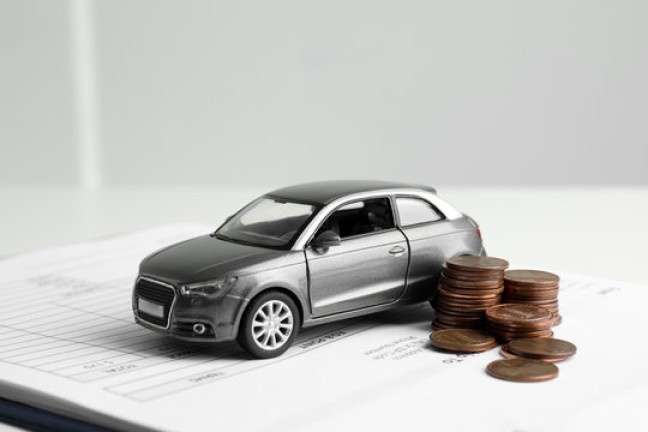When it comes to buying a car in British Columbia (BC), many people like me turn to car finance as a way to spread the cost of the vehicle over time. Whether it’s a new or used car, financing helps make purchasing more affordable. I’ve spent time studying how car finance works in BC, the available options, and what factors to consider before committing to a loan. This article aims to offer a clear, detailed look at BC car finance, so you can make an informed decision based on your needs and financial situation.
Table of Contents
What is BC Car Finance?
BC car finance is essentially the process of borrowing money to purchase a car. You agree to repay the amount borrowed (along with interest) over a set period. This can be through a loan provided by a bank, credit union, dealership, or other financial institution. The main goal is to make the purchase more affordable by breaking down the total cost into manageable monthly payments.
Types of Car Finance in BC
There are several car financing options available in BC, each with its advantages and considerations. Below, I break down the most common types of car finance you might encounter:
- Traditional Auto Loans These are loans provided by banks or credit unions. The loan is typically secured, meaning the car acts as collateral. You make regular monthly payments over a set period (often 3-7 years), and once the loan is paid off, you own the car outright.
- Dealership Financing Dealership financing is offered directly through the car dealership. This can sometimes include promotional offers like 0% interest rates or deferred payments. However, these deals can be more limited in terms of loan term flexibility or total loan amount, so it’s important to check the fine print.
- Leasing Leasing a car is essentially renting it for a set period, typically 2-4 years. At the end of the lease term, you can either purchase the car, lease another one, or return it. Leasing typically involves lower monthly payments than traditional loans, but you don’t own the car at the end of the term.
- Personal Loans Some people, like me, prefer to take out a personal loan to purchase a car. Unlike an auto loan, personal loans are unsecured, meaning the car isn’t used as collateral. Personal loans can offer greater flexibility, but the interest rates tend to be higher than those of secured loans.
Factors to Consider Before Choosing a BC Car Finance Option
When deciding on the right car financing option in BC, I recommend considering the following factors:
- Interest Rates Interest rates can significantly impact how much I’ll pay over the life of the loan. In general, the lower the interest rate, the less I’ll pay in total. My credit score plays a major role in determining my interest rate, so I always make sure it’s in good shape before applying for car finance.
- Loan Terms The loan term refers to how long I’ll be repaying the loan. Longer loan terms generally mean lower monthly payments, but they also mean I’ll pay more interest over time. On the other hand, shorter loan terms involve higher monthly payments but less interest. Here’s an example:
| Loan Term | Interest Rate | Monthly Payment | Total Interest | Total Paid |
|---|---|---|---|---|
| 36 months | 6% | $450 | $1,800 | $16,800 |
| 60 months | 6% | $350 | $3,500 | $21,000 |
| 72 months | 6% | $300 | $4,300 | $22,100 |
In this example, even though the monthly payments are lower for the 60 and 72-month loans, the total amount paid over the life of the loan increases. I personally prefer balancing a shorter loan term with an affordable monthly payment.
- Down Payment A larger down payment reduces the amount I need to borrow, which can lower my monthly payments and the amount of interest paid. It also increases my chances of getting a better loan offer. Typically, aiming for at least 20% down is ideal.
- Monthly Payments It’s crucial to consider how much I can afford to pay each month without stretching my budget. In addition to the loan payment, I also need to factor in insurance, maintenance, and other car-related expenses.
- Total Loan Amount The total amount I borrow impacts both the monthly payment and the total interest paid over time. I always aim to borrow as little as possible by considering my needs, car price, down payment, and loan term.
The Pros and Cons of Each Financing Option
Each car finance option in BC has its strengths and weaknesses. Let’s compare them in a simple table:
| Financing Option | Pros | Cons |
|---|---|---|
| Auto Loan | Car ownership, flexible terms | Higher monthly payments, secured loan |
| Dealership Financing | Convenient, promotional rates | Limited flexibility, potentially higher costs |
| Leasing | Lower monthly payments, new car often | No ownership, mileage limits, wear and tear fees |
| Personal Loan | Flexibility, unsecured loan | Higher interest rates, personal credit required |
How to Qualify for Car Finance in BC
To qualify for car finance in BC, I need to meet several criteria. Lenders assess these factors to determine how risky the loan is:
- Credit Score My credit score is one of the most important factors in determining whether I qualify for car finance and what interest rate I’ll be offered. A higher score typically means better rates. I always check my score before applying to ensure I have a good understanding of where I stand.
- Income Lenders will also assess my income to ensure I can afford the monthly payments. The more stable my income, the more likely I am to qualify for a loan.
- Debt-to-Income Ratio This ratio compares my monthly debt payments to my monthly income. Lenders like to see a lower ratio, as it indicates that I’m not overburdened with debt.
- Down Payment Having a sizable down payment shows the lender that I’m financially responsible and reduces the amount I need to borrow. It can also improve my chances of securing better loan terms.
Example Calculation: Car Loan in BC
Let’s say I want to finance a $25,000 car with a 5-year loan term and an interest rate of 7%. I’m able to put down 15% ($3,750). Here’s how the numbers break down:
- Loan Amount: $25,000 – $3,750 = $21,250
- Monthly Payment Calculation: Based on an interest rate of 7% and a loan term of 60 months, my monthly payment would be approximately $421.
- Total Interest: Over the 5-year term, I’d pay around $4,600 in interest.
- Total Paid: I would end up paying a total of $25,850 ($21,250 loan + $4,600 interest).
Here’s a simplified table to illustrate the breakdown:
| Amount | Value |
|---|---|
| Car Price | $25,000 |
| Down Payment (15%) | $3,750 |
| Loan Amount | $21,250 |
| Monthly Payment | $421 |
| Interest Paid | $4,600 |
| Total Paid | $25,850 |
Key Takeaways
In my experience, choosing the right car finance option in BC requires careful consideration of several factors. I’ve found that the best choice depends on my financial situation, long-term goals, and the type of car I want to purchase. Some people prefer the stability of owning the car outright through a traditional auto loan, while others may find leasing a better fit for their lifestyle. Either way, it’s essential to understand the terms, interest rates, and repayment structure before committing to a loan.
Lastly, it’s always helpful to shop around and compare offers from different lenders and dealerships. Whether I choose a bank loan, dealership financing, or lease, I want to ensure I’m getting the best deal possible. By understanding the options available and how car finance works in BC, I can make a well-informed decision and feel confident about my car purchase.





